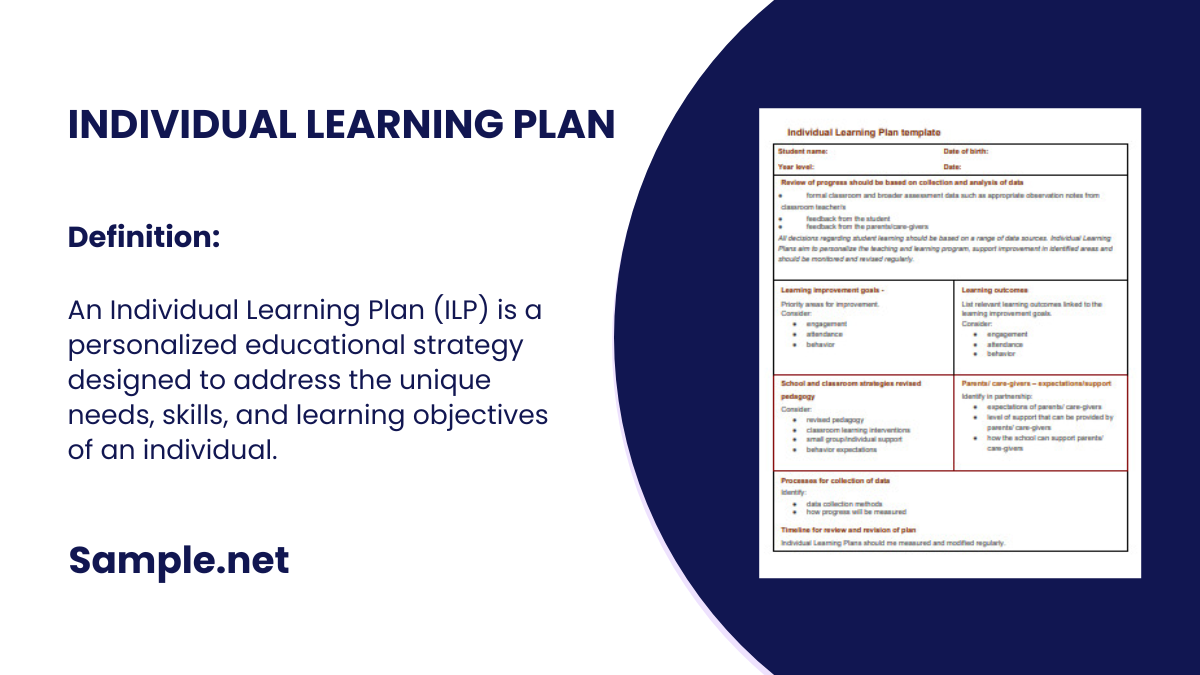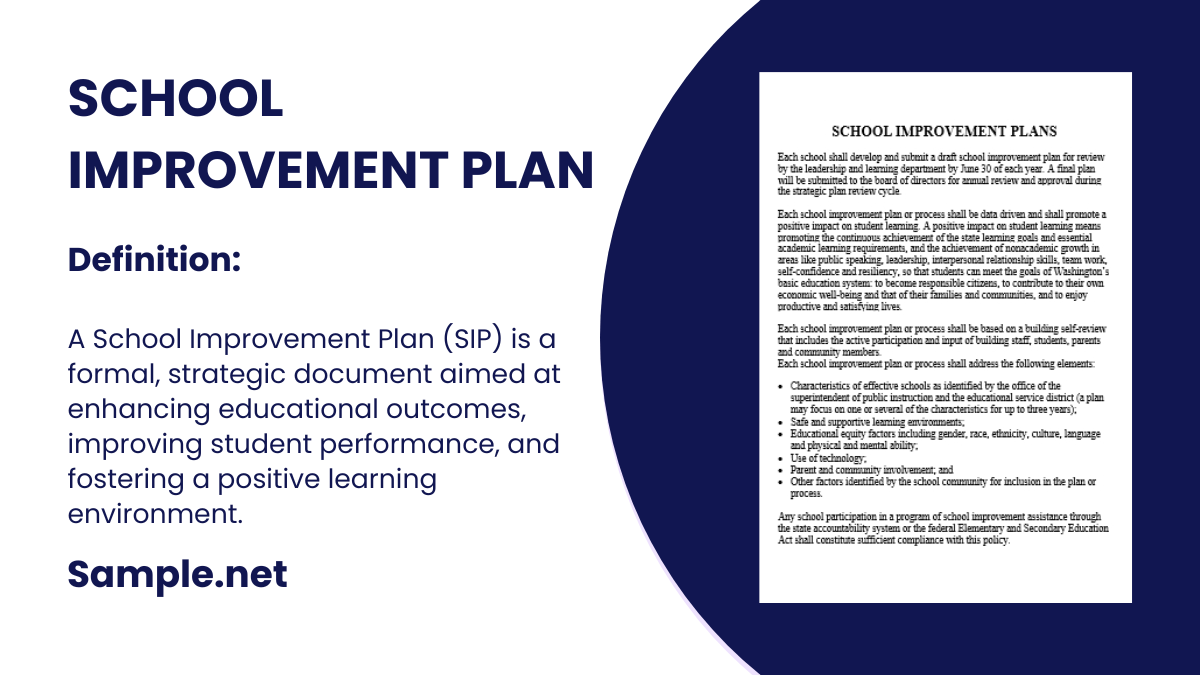An Individual Learning Plan (ILP) is a personalized educational strategy designed to address the unique needs, skills, and learning objectives of an individual. It serves as a roadmap for…
continue reading
37+ Sample Birth Plan Templates
-
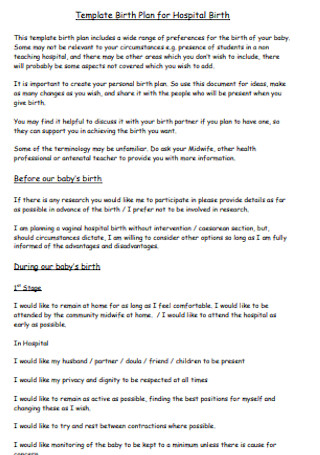
Hospital Birth Plan Template
download now -
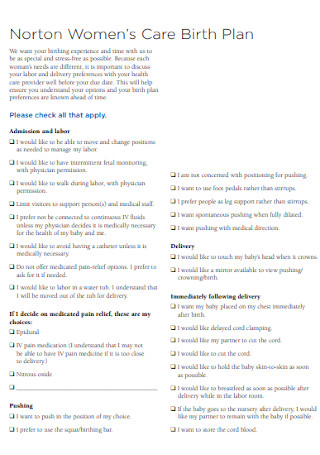
Womens Care Birth Plan
download now -
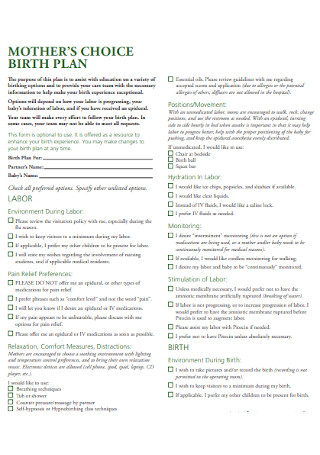
Mothers Choice Birth Plan
download now -
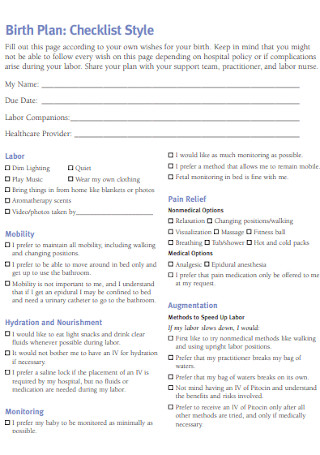
Birth Plan Checklist Template
download now -
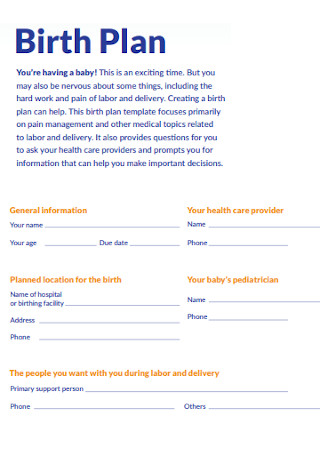
Sample Birth Plan Template
download now -
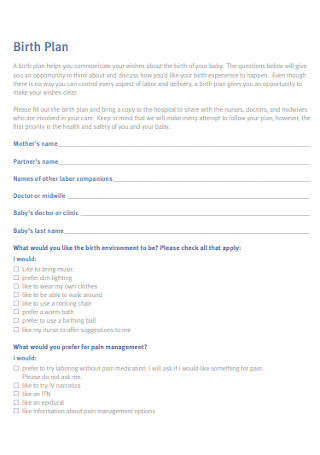
Basic Hospital Birth Plan
download now -
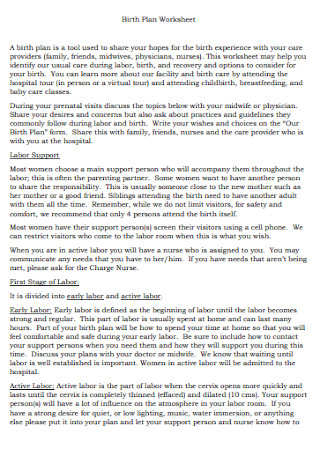
Birth Plan Worksheet
download now -

Simple Birth Plan Template
download now -
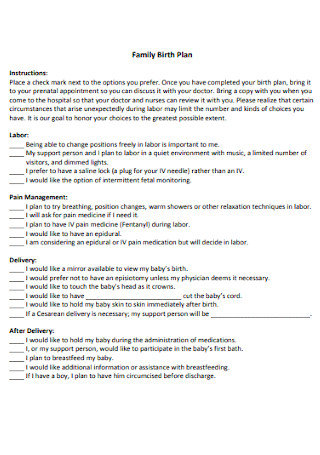
Family Birth Plan Template
download now -

Labor Birth Plan Template
download now -
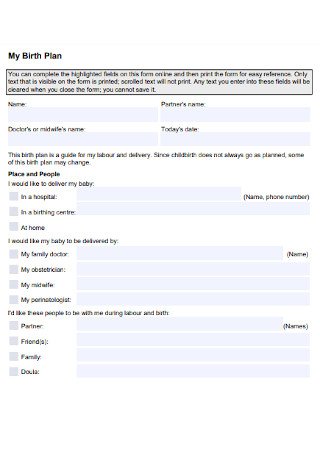
My Birth Plan Template
download now -
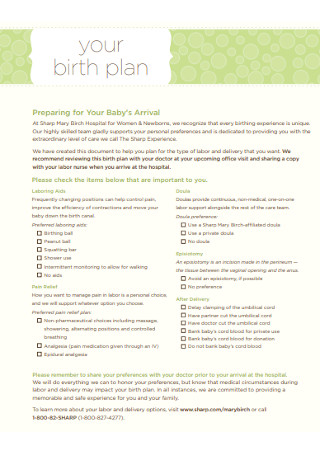
Baby Birth Plan Template
download now -
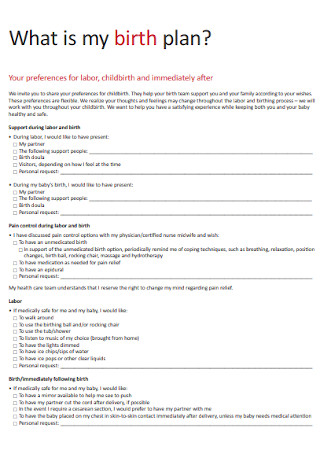
Children Birth Plan Template
download now -
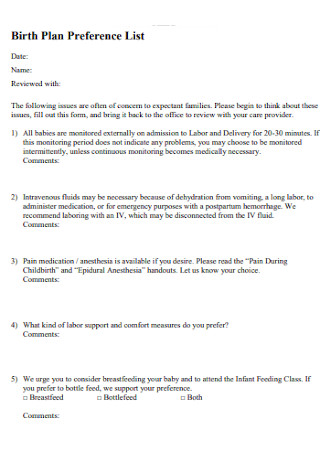
Birth Plan Preference List
download now -
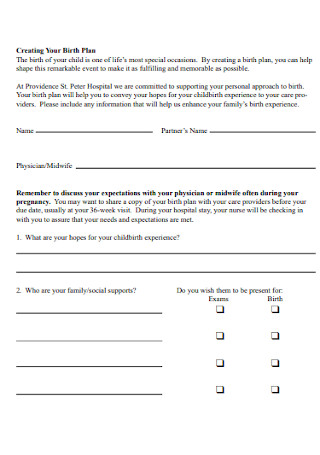
Your Birth Plan Template
download now -
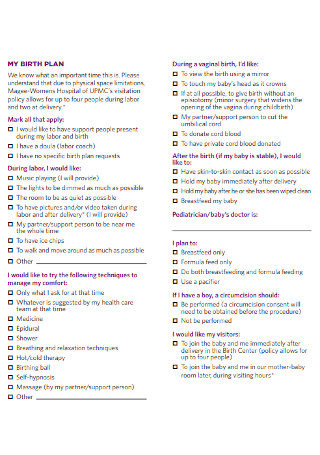
Birth Experience Plan Template
download now -
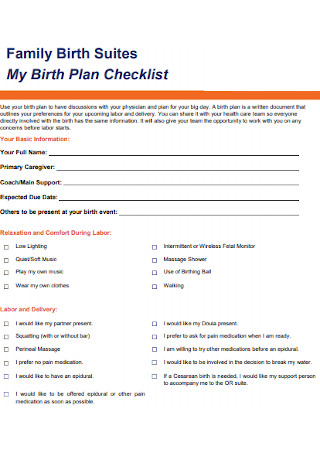
Family Birth Plan Checklist
download now -
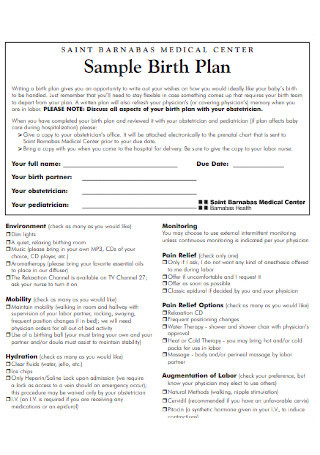
Sample Birth Plan Example
download now -
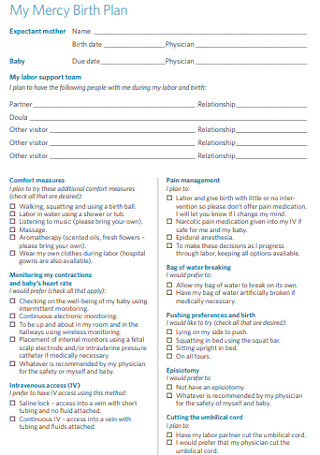
My Mercy Birth Plan
download now -
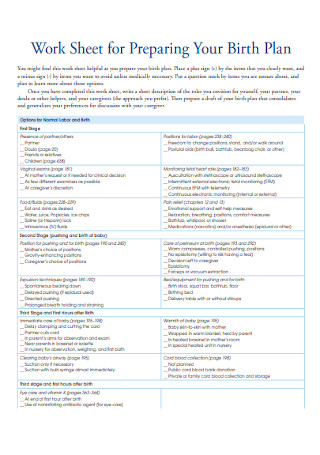
Work Sheet for Birth Plan
download now -
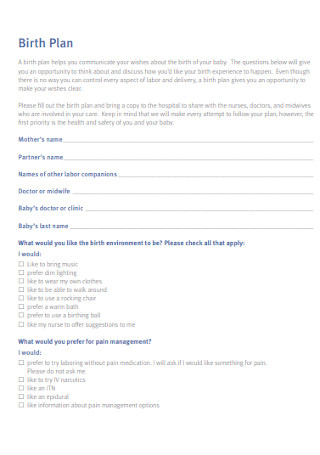
Standard Birth Plan Template
download now -
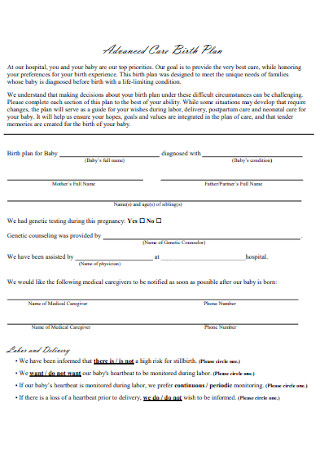
Advanced Care Birth Plan
download now -

Your Plan for Childbirth
download now -
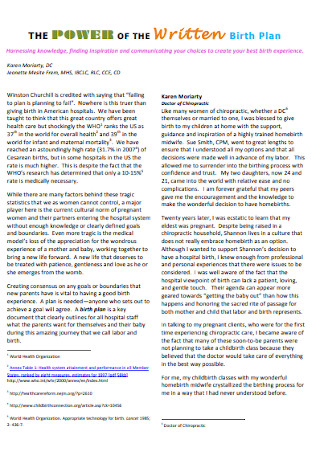
Power of Written Birth Plan
download now -
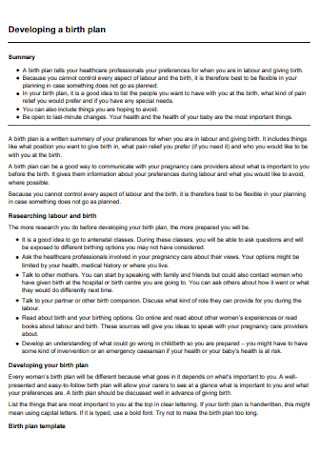
Formal Birth Plan Template
download now -
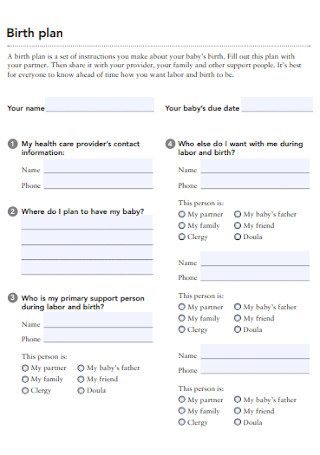
Birth Plan Format
download now -
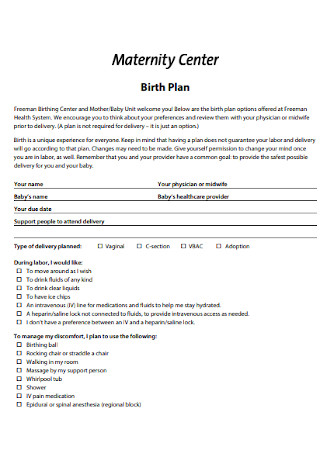
Sample Maternity Birth Plan
download now -
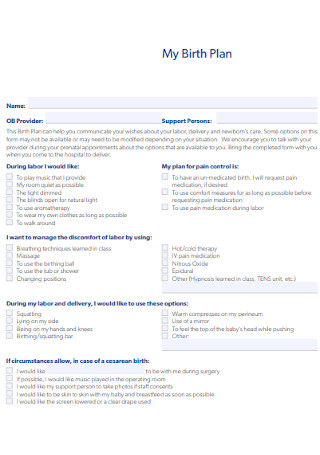
My Birth Health Plan Example
download now -
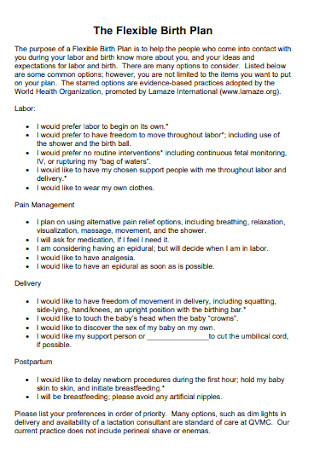
Flexible Birth Plan
download now -
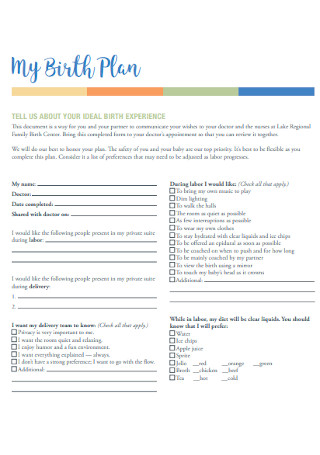
My Family Birth Plan Template
download now -
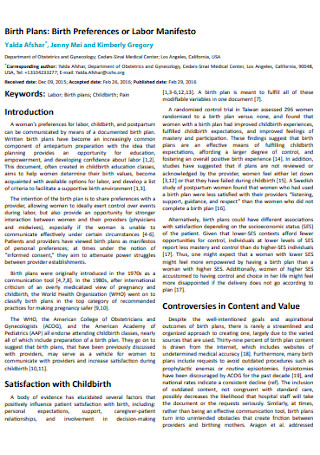
Birth Preferences Plan Template
download now -
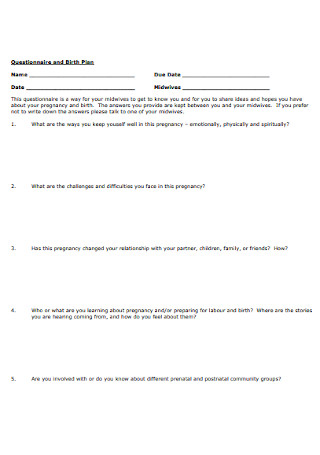
Questionnaire and Birth Plan
download now -
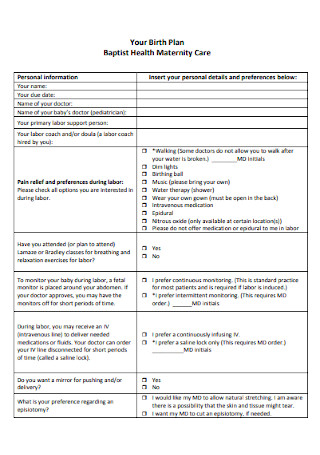
Birth Maternity Care Plan
download now -
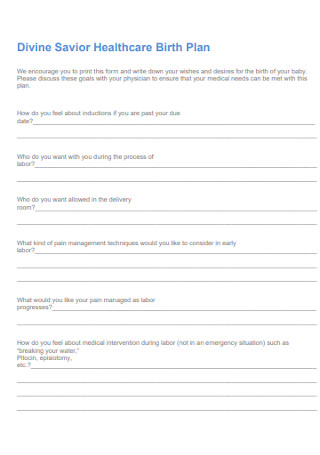
Divine Savior Healthcare Birth Plan
download now -
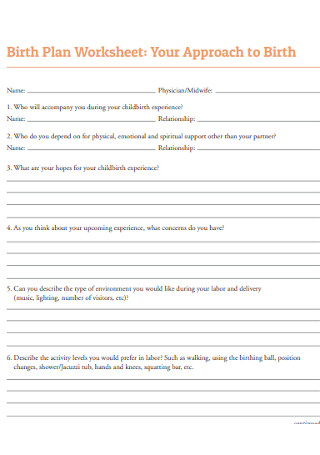
Birth Plan Worksheet Example
download now -
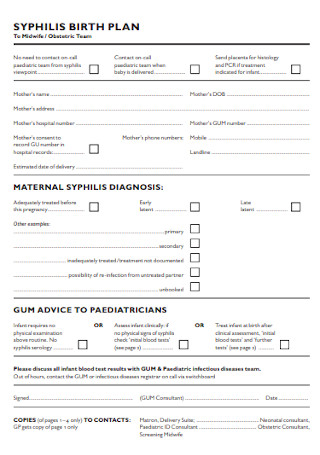
Syphilis Birth Plan Template
download now -
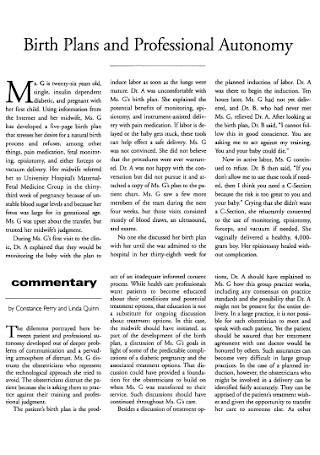
Birth Plans and Professional Autonomy
download now -
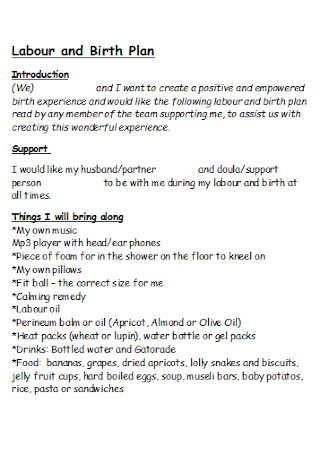
Labor and Birth Plan
download now
Birth Plan: What Is It?
“My water just broke,” is a common line uttered by women when they are about to give labor. Next, you face significant decisions like how birthing takes place. Which hospital should the couple go to? How much is the budget? Such questions all get answered according to birth plans. Thus, a birth plan is a detailed outline of a woman’s pregnancy and delivery preferences. You can treat such a scheme as a to-do list or checklist regarding what pain medications to take, which comfortable birthing operation a mother desires, and so much more. In short, mothers trust this guide for their well-being, and so as their babies’.
According to the Centers for Disease Control and Prevention in a 2018 survey, the number of births in the U.S. reached up to 3,791,712.
Meanwhile, 2010 had Americans reach approximately 6.2 million pregnancies.
Of the 6.2 million, Statista added that 4 million considered live birth, 1.1 million chose abortion, and 1 million experienced a miscarriage.
Why Are Birth Plans Important?
The last thing a woman wants is to face pregnancy and labor unprepared. Soon-to-be moms may need medical treatment, emotional support, and other special needs anytime during pregnancy. Thanks to birth plans, they can finally stay prepped up for the incorporated fees, healthcare services, appointment schedules, and others. Most importantly, what a mother prefers is given respect in this situation. Without an option, a woman comfortable with a home birth may be forced to deliver at a birth center. Or worse, having many people view the childbirth process aside from the husband and family. In ancient times, monarchs even have a full-court (up to 70 people) as an audience, which is hard to imagine for anyone giving birth. The point is, you depend on plans to prevent the worst circumstances of labor.
Elements of a Birth Plan: What to Include?
Statista mentioned in a 2010 research survey that out of 6.2 million pregnancies in the U.S., 1 million were miscarriages. While health problems are a known possibility of what causes a miscarriage, it is a known fact as well that poor decision-making and dismal planning causes miscarriages for some women. Therefore, the need to structure a great birth plan is necessary. How do you do that? Make sure you add these essential elements into your birth plan first:
How to Produce an Effective Birth Plan
In 2018, the birth count in the U.S. was approximately 3,791,712. With such statistics, you receive an automatic response that there are a lot of women who undergo birthing every year. Back to Statista’s 2010 survey of 6.2 million pregnancies, it said that not everyone underwent live birth. In fact, 1.1 million considered an abortion instead. For those who want to work hard in succeeding labor. Expect to boost such a chance by following an effective or a well-made plan. How can one manage that? Just follow these steps in making a professional birth plan:
Step 1: Picture Out the Labor Setup
During the early signs of pregnancy, the woman deserves a chance to close her eyes and create a visual on her head about how she wishes the birth setting turns out. Ideally, birth plans consider women’s preference anyway. This mother can talk things out with her husband to inform about the whole delivery atmosphere and incorporated goals. This first step tells you that you come up with a draft for the birth plan too. Drafting helps mothers in the decision-making process in case they have good ideas or some mistakes needed to fix. After the draft, a perfected version of a birth plan comes in the end.
Step 2: Insert the Birth Plan Elements
Remember those elements of a birth plan discussed earlier? Yes, you should be sure to include such elements in the birth plan. With our collection of professional birth plan templates, planning would not get any easier. You only transfer everything written in the draft to the template of your choice. But, you ensure that every element is present to keep the scheme more effective. The best part is you can adjust such plans according to anyone’s preference. Alterations on the content and format are surely allowed. Do you want to make the plan into more of a worksheet rather than a checklist? Do you prefer a one-page document over lengthy ones? You name it! You can make it work with the birth plan’s customizable features.
Step 3: Go for the Practical Approach
After adding the elements, you judge the plan according to its practicality. Indeed, having many goals for a pregnant woman is impressive. Yet, how achievable are such goals? Plans without any realistic approach will only remain as plans when you should create something doable instead. An example is when the woman chooses to proceed with home birth. However, the house’s environment does not pass the standards in terms of safety, sanitation, and other policies. For better knowledge, it would be feasible to have real professionals who take care of the birthing process instead. On the other hand, it is not wise to go for the most expensive services when, in reality, the couple’s budget is not enough. Besides the budget, couples also need to observe feasibility in terms of which is nearer and easier to handle.
Step 4: Keep it Flexible
Learn to adjust no matter what because the unexpected can occur at any time, dashing even the most well-thought-out plans. Yes, birth plans are useful for guidance, but you should not treat it with a hundred percent accuracy. For example, the schedule or monthly timesheet of when a woman gives birth is merely predicted according to the signs of pregnancy. There may be a chance for labor to delay further. Therefore, being versatile enough to adjust is the key to avoid complicating matters of any unexpected circumstances. Maybe a doctor has a change of plans for the betterment of the delivery. A tip to make plans flexible is to give room for the addendum in case additional conditions apply.
Step 5: Consider Professional Help
Last but not least, professional services should come into play. This part is necessary when the couple is still very new with the process. The best assistant a pregnant mother can get is a midwife. The midwife has the responsibility and training in terms of assisting with the labor. Maybe a doctor gives out a very scientific or medical explanation of certain services that it is hard to understand some terms. When things get too technical, the midwife is around to expound such terms in layman’s terms. Aside from a midwife, be sure to speak with other specialists who can accommodate pregnant women as they can help in reviewing the birth plan and increasing the delivery success rate.
FAQs
How necessary is a birth plan?
First of all, any woman can give birth even without a birth plan. But, having such a plan is very beneficial to ensure the pregnant woman’s preferences during labor will go as planned and as successful as possible. What better way to ensure nothing goes wrong than to structure a detailed plan anyway?
Which is the best way to give birth?
A lot of options are available on how to give birth. Hospital birth, water birth, hypnobirthing, natural—you name it. Which is the best can go according to a woman’s preference. Although a woman has a lot to choose from, the safest example would be hospital birth. That way, trained medical professionals will assist, and the majority of American women even choose to go to a hospital during labor.
Do you poop while giving birth?
Poop happens during childbirth because it will be hard to control for the woman in managing it. The explanation behind that is how a woman pushes her muscles in pushing out the baby, which is similar to the pushing sensation while pooping. Just know that the poo is nothing to be ashamed of, though, as it is normal, and a lot of mothers have experienced it.
Whether the future mom is a first-timer or someone who has delivered many times, birth plans surely bring the necessary benefits by lessening the stress of labor or by enhancing one’s condition during the delivery. Furthermore, any mother’s wishes regarding childbirth would be given importance inside such a strategic plan. Why should the whole birthing experience have too much effort, planning, and detail? Simple—to welcome a new and healthy baby into the world.
